Weaver news
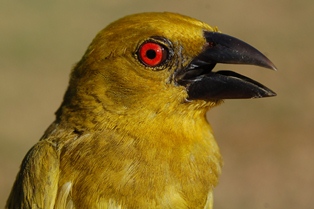
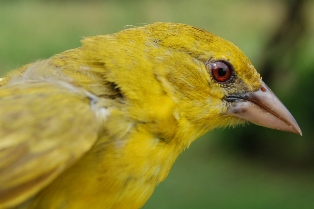
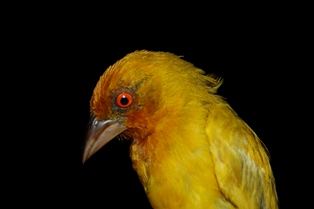 The Eastern Golden Weaver Ploceus subaureus is also known as the African Golden Weaver or Yellow Weaver. The name has been confused with Holub's Golden Weaver P. xanthops but the scientific names prevent confusion. The Eastern Golden Weaver is common from Kenya to the Eastern Cape and as far inland as Malawi (see map below), based on Birds of Africa). Inhabits coastal plains, river floodplains and lowland river valleys. It is a yellow weaver. The male in breeding plumage has a black bill and red eye (above left). The female is duller yellow, has a horn to dark bill, and eye is brown or reddish brown (above middle). Read more about the variation in eye colour of this species and some other weavers in a pdf here (821 kB).
This species appears to be expanding its range westwards in Swaziland and the Kruger National Park, Mpumulanga, South Africa (see SABAP2 map here. This includes a PHOWN record 1701 near Kruger. The Eastern Golden Weaver feeds on seeds, including rice and millet, and also nectar and insects, especially termite alates. The young are fed mainly on insects. Photo (right): male Eastern Golden Weaver below nest, from phown 1960. It is colonial, with small territories, and is probably polygynous. The tightly-woven nest is oval to spherical, with the entrance below. Nest material is grass or reed strips. Lined with soft Eragrostris inflorescences, rarely a few feathers. The nest is attached to a single reed stem at the side, or supported by a reed on either side, sited 1-2 m above water, or is situated in trees at a much higher level. The reeds or branches above nests are often stripped of leaves. It may nest alongside other weaver species. Nests were raided by African Fish Eagles Haliaeetus vocifer in Malawi. It is an occasional host of the Diederik Cuckoo Chrysococcyx caprius. Of 13 birds recovered, 1 had moved 78 km, the others being within 10km of the ringing site. The oldest Eastern Golden Weaver to date was a female recaptured after 8 years 5 months (read more here). There are 54 PHOWN records, covering both subspecies (see PHOWN summary). Average colony size in reeds and trees is similar at 26 (n=22) and 27 (n=8) respectively, but more PHOWN records with counts are needed to allow more detailed analyses. Submit any weaver nest records to PHOWN (PHOtos of Weaver Nests) via the Virtual Museum upload site. PHOWN summary Previous Wedn: White-winged Widowbird Full weaver species list |








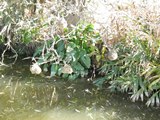


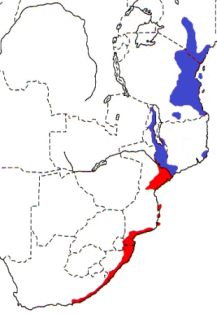 Two subspecies are currently recognised:
Two subspecies are currently recognised:
